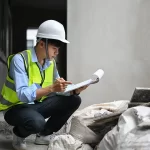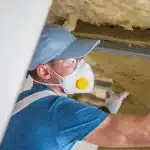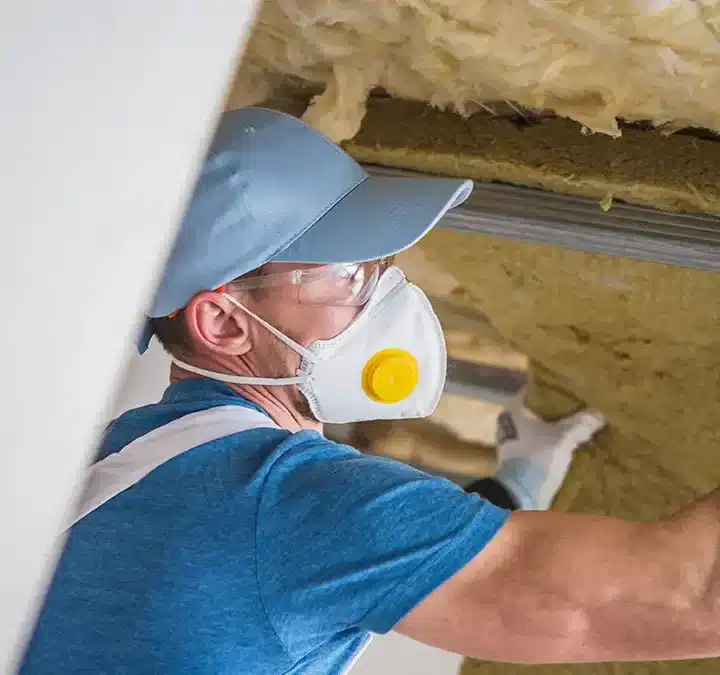
Understanding the Role of Designated Substance Survey
April 12, 2024
Insulation Removal Insights: Signs It’s Time For Replacement
May 13, 2024Insulation removal is critical in maintaining a safe and healthy indoor environment. Proper removal is essential to prevent health and environmental issues, whether due to aging insulation, contamination, or renovation projects. In this blog, we will discuss important factors for safely removing insulation. It is crucial to hire professionals and follow best practices.
Understanding the Risks
Before starting the process, assessing the potential risks associated with insulation materials is crucial. Many older buildings may contain environmental hazards such as asbestos, which pose significant health risks if disturbed. Removing insulation can release harmful particles into the air, causing breathing problems and other health issues.
Understanding these risks is fundamental to developing a comprehensive removal plan.
Professional Expertise
Removing insulation should not be done by yourself. It needs special knowledge, tools, and training to be safe and legal. It is important to hire a professional environmental hazard removal company with experience in insulation removal. These experts have the necessary skills to assess the type and condition of insulation, implement appropriate containment measures, and safely remove and dispose of hazardous materials.
Risk Assessment and Planning
A thorough risk assessment is essential before commencing insulation removal. The evaluation involves identifying environmental hazards, such as asbestos or mold, and developing a detailed removal plan. Building occupancy, accessibility, and ecological considerations must also be considered. Planning should also include strategies for minimizing disruption to occupants and ensuring proper containment to prevent contamination of surrounding areas.
Adherence to Regulations
Insulation removal must comply with local, state, and federal regulations governing hazardous materials and environmental protection. This includes obtaining necessary permits, following established protocols for handling and disposal, and documenting removal activities. Not following rules can lead to legal consequences and risks to human health and the environment.

Safety Measures
Safety should be prioritized throughout the removal process. Safety measures include Personal Protective Equipment (PPE), such as respirators, gloves, and coveralls, to minimize exposure to hazardous materials. Ventilation systems should be utilized to control airborne particles and containment barriers should be erected to prevent cross-contamination. Regular monitoring and air quality testing ensure that safety measures are effective and hazards are adequately controlled.
Insulation Removal Techniques
Insulation removal techniques play a crucial role in ensuring both safety and effectiveness. Different methods may be employed depending on the type of insulation and the specific circumstances. For instance, mechanical removal methods such as vacuuming or scraping may be used for loose-fill insulation. At the same time, encapsulation techniques may be more suitable for materials containing asbestos.
Wet removal methods involving water or specialized solutions can help minimize the release of airborne particles during removal. Additionally, careful handling and containment of removed insulation materials are essential to prevent contamination of the surrounding environment. Environmental hazard professionals can mitigate risks and achieve optimal outcomes in insulation removal projects by employing the appropriate techniques.
Environmental Responsibility
Insulation removal should be conducted with the environment in mind. Minimizing waste generation, recycling materials whenever possible, and disposing of hazardous materials by regulations are essential practices. By prioritizing environmental responsibility, we can mitigate the impact of insulation removal on ecosystems and communities.
Professional Removal Service
Effective insulation removal requires careful planning, professional expertise, and adherence to environmental regulations. By understanding the risks, hiring qualified professionals, and implementing comprehensive removal plans, we can safeguard the health of occupants and protect the environment.
The removal is not just about improving indoor comfort—it’s about prioritizing health, safety, and environmental responsibility for present and future generations. At Healthy Environmental, our professionals are experts in insulation removal and offer high-quality solutions. Contact us to learn more about our removal services.


